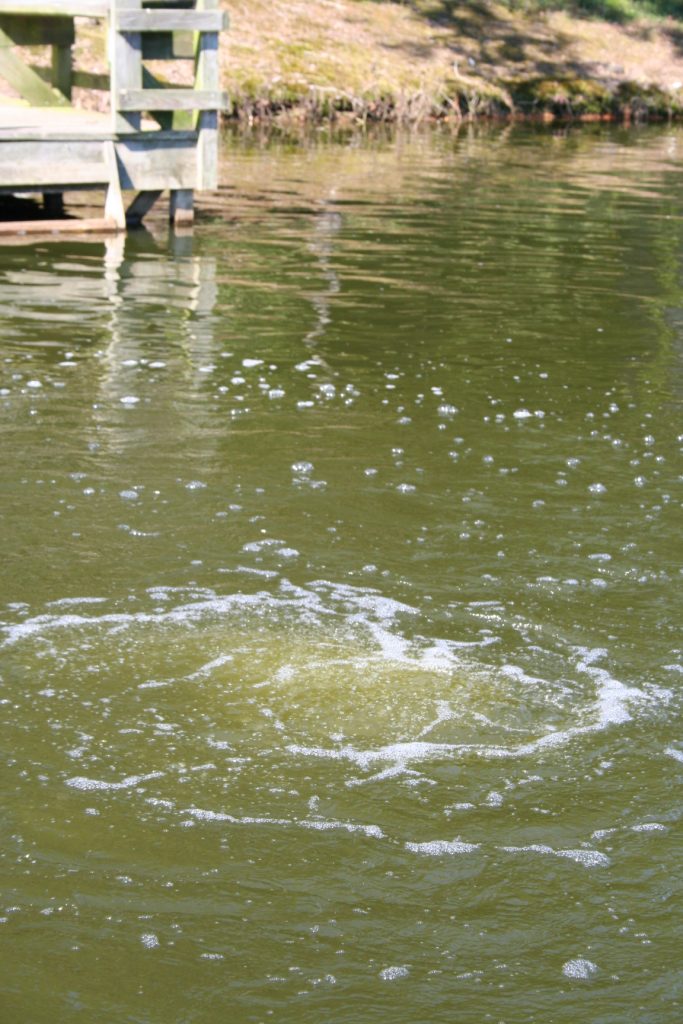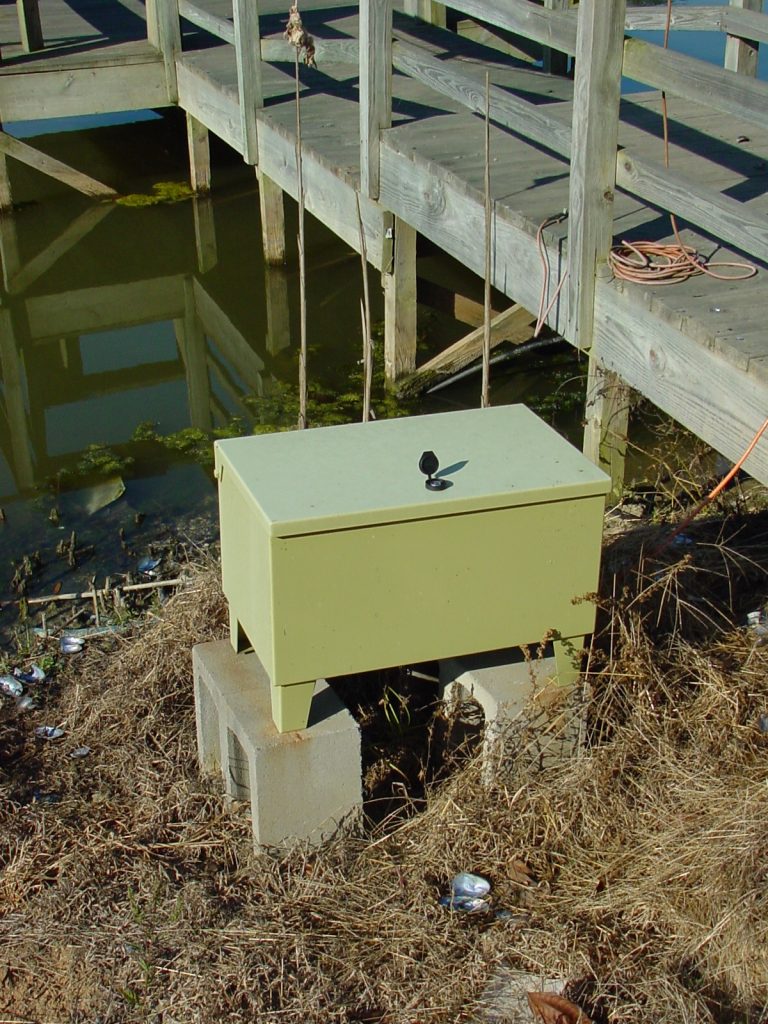Large Pond Aerator Points To Consider
What exactly is a large pond aerator and will it help to maintain and contribute to the vitality of your pond? What I mean by that is, will it help you grow bigger and healthier fish?
The term “aeration” basically means “to introduce air into a material” and that “material” includes water. The problem is that there is a basic misconception as to the actual benefit for the owner of a freshwater fishing pond, when it comes to aerators and how they work.
Norman Latona is president of Southeastern Pond Management. SE Pond offers services that cover the waterfront of pond development and management including ecosystem analysis, management programs, pond construction, liming, fertilizing, fish inventory assessment, removal processes, stocking of forage and game fish, maintenance and more. They cover the Southeast and do projects in other areas such as Illinois and as far west as Arkansas and Texas
According to Latona, many pond owners don’t really know exactly what a large pond aerator is, what it does to benefit the fishery and, aside from the esthetic side of the equation, why they should have one installed.
“For most of the ponds we deal with, from one acre up to several hundred acres, the vast majority don’t need artificial aeration in order to survive and thrive,” Latona said. “Artificial aeration in aquaculture and fish production operation may be a requisite, but it really isn’t in ‘classic fish pond management’ designed for fishing.”
Latona explained that the average well limed and fertilized pond with bass and bluegill and forage fish has about 300 to even 400 pounds or fish per acre. When you look at aquaculture (the breeding, rearing and harvesting of fish and other organisms in a water environment) that number can increase to thousands of pounds of fish per acre. That type of operation is on a whole different level then an average fishing pond.

True aeration of your pond takes more than just a fountain spraying some water into the air.
“When you ratchet up the density of fish per acre from hundreds to thousands of pounds that increases the biological oxygen demand (BOD) on the water. You get more and more critters vying for oxygen and more waste material being produced that consumes oxygen in the decomposition process,” Latona said. “It isn’t even apples to oranges; it is apples to concrete blocks.”
Latona points out that aeration of any pond is expensive. In order to impact the dissolved oxygen over an acre of water that is several feet deep it takes about one horsepower per acre of pond. Plus, there is the cost and operating expense of the equipment. While a pretty little fountain out in the center of the lake with rotating light colors that shoots water up eight, ten or more feet may look great, it only moves a little bit of water a great distance In terms of effective pond wide aeration (oxygenation) , it really isn’t having an impact or benefiting the pond environment.
True aeration moves massive amounts of water a very short distance and is effective in adding oxygen to a large body of water and that is where the concept of thermal stratification and “destratification” comes into play.
Destratification is a process in which air or water is mixed in order to eliminate stratified layers of temperature or plant or animal life and it is different from aeration. It’s not really adding oxygen to the water, it is a systematic way to increase the amount of water in a pond that has oxygen in it.
“Everyone who has jumped in a lake or a pond in the summer knows that while your feet feel chilly the water around your chest feels like bath water and that is thermal stratification,” Latona said. “Warm water is less dense than cold water so it sits at the top of the water column getting heated up by the sun and it insulates the colder and more dense water below. Those layers don’t mix and the colder water has less oxygen.”
The point where the two layers separate is called the “thermocline” and in the summertime, below that line, the water is colder and more comfortable for the fish, but basically devoid of dissolved oxygen. That means fish can’t live there. They can dive down to grab a baitfish but if they stay too long, they will suffocate.
One of the phenomena of a thermally stratified pond is that the pond may experience a fish kill in the hot summertime after a big cold windy thunderstorm.
“You have a string of hot summer days and all of a sudden you get a massive cold-water thunderstorm with lots of cold water coming out of the sky and a bunch of wind all in a very short period of time and it forces a mixing of the layers,” Latona said. “The result is that the mix of water overall has too little oxygen for fish to survive and, boom, you get a fish kill.”

Having the proper destratification system in your pond helps prevent a fish kill.
It’s like an automobile/wildlife roadkill scenario on steroids, except that the automobile is mother nature and the roadkill is fish.
“As a result, folks think that they need to have aeration and the truth of the matter is the top layer before the thunderstorm came blowing in was saturated with oxygen and an artificial aeration system wouldn’t have done anything to prevent the fish kill.”
While summertime is the most common season for a fish kill, a kill can occur in the fall when the weather takes a turn for the worse.
“Sometimes we see them in the fall when suddenly the air temperature drops 30, 40 and even 50 degrees and the water on top just cools down so rapidly and gets denser and it starts to sink,” Latona added.
The solution is a destratification system.
How A Pond Aerator Works
The system is connected to a shoreline mounted compressor, normally housed in a centrally located protective cabinet in plastic tubing which is run to various strategic locations in the pond. They are hooked up to “airstones” which are similar to the filters you see in aquariums except much larger. Air is pumped to the stones which breaks it down into millions of tiny bubbles and when that air makes its way to the surface it is displacing water and creating a gentle current.
“It looks like a boil about the size of a pickup bed and what we are doing is taking that cold water at the bottom and forcing it to the top and taking the warm water at the top and forcing it down to the bottom and creating a current effect which effectively eliminates pond stratification,” Latona said. “It eliminates the ‘turnover’ and we aren’t really adding oxygen to the water but we are moving water and equalizing the oxygen content from top to bottom.”
In addition to the efficiency of a destratification system, Latona says that for a ten-acre pond you can run a rotary vane compressor in an insulated steel cabinet running 24/7 for approximately $30-$50 a month. While the cost of the pond aerator system is dependent on a number of different factors, it isn’t exorbitant, considering the scope of the investment you have in your pond.
Latona tells pond owners that the cost of installing a destratification system is dependent on the shape and design of the pond, the water depth (the deeper you locate the stones the more efficient they are), the bottom contour keeping an eye out for deeper holes and other variables.
“It gets a little bit tricky in terms of design and it is hard to say what the actual cost will be overall but I’ll say that in general, typically, you’re talking about a couple of thousand to get you started and three, four or maybe even five thousand bucks for the destratification system and that will get you a long way,” Latona said.

The compressor for you pond aeration system should be mounted on the shoreline in a strategic place.
Pond aerators basically get water moving. When the bubbles rise to the surface, they create lift which causes the colder water on the bottom to join the parade to the surface then come back down. It basically mixes all of the water temperatures together, preventing algae bloom and, in the colder times, helping to reduce pond “freeze over”.
The size of pond aerators are rated on a cubic feet per minute (CFM) basis. For a one and a half acre pond a 3.0 CFM aerator may do the trick but that depends on the specifics of the pond. For larger ponds the CFM requirements increase. Size and costs of equipment and installation are dependent on how big the pond is along with the bottom contour and characteristics of the structure and surrounding environment.
After all is said and done, what about fishing in a pond that doesn’t have stratification? Is it easier to catch fish or is it harder? When you equalize the oxygen levels across the water column that means that fish have a wider habitat. You could catch fish in five feet, 10 feet or, depending on the pond, even deeper. Does it enhance your angling experience or does it make it more challenging? Does it make the fish harder to target or does it congregate them in some cooler water with good oxygen levels?
“It’s probably a different answer for every pond and lake and the challenge is for the fisherman to figure it out,” Latona concluded.
